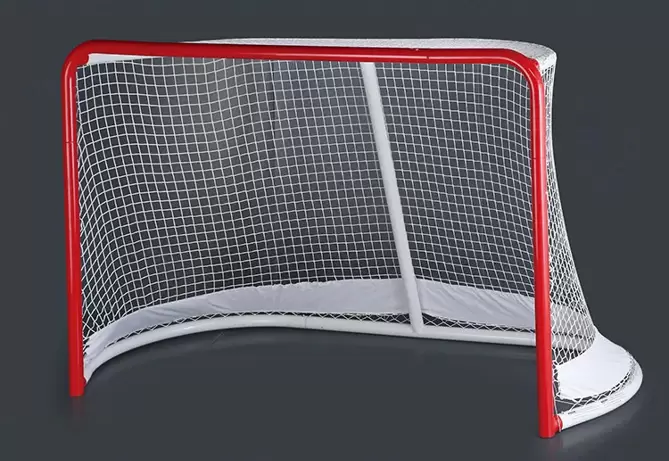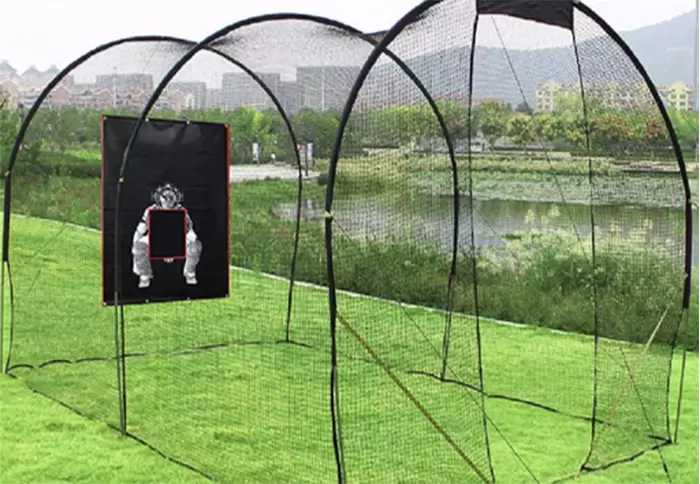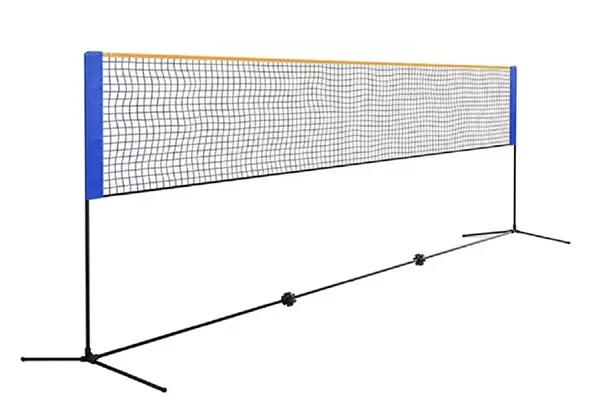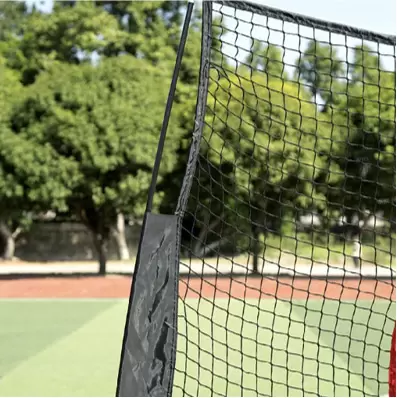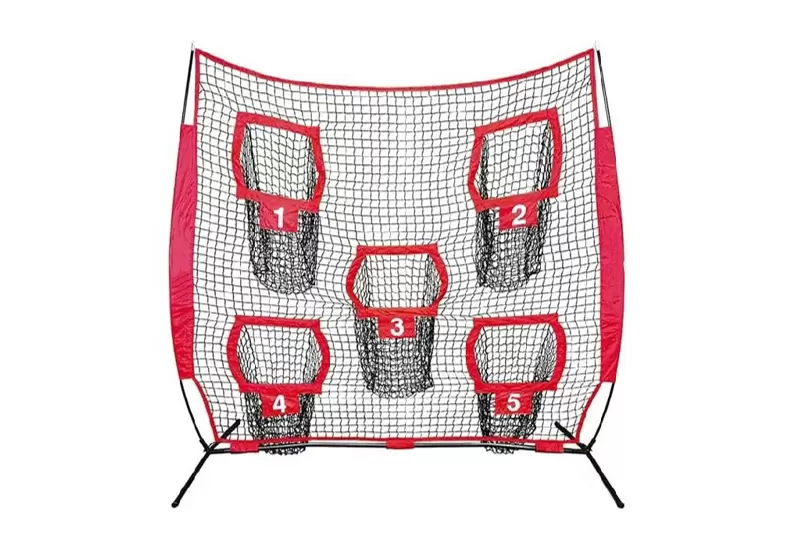When it comes to rugby equipment, most players and coaches focus on the ball, the boots, or the pitch itself. But the rugby net — whether used for passing practice, goal safety, or perimeter protection — is only as good as the material it's made from.
A net might look strong at first glance, but material choice determines its durability, safety, and long-term value. The difference between polyester, nylon, or polyethylene ropes may mean a lifespan of months versus several years.
In this article, we’ll explore the key materials used in rugby net construction, compare their pros and cons, and give you practical advice for choosing the right option for your club or school.
To see high-quality rugby nets designed with advanced materials, check out Yichen Sports Rugby Net
1. The Role of Materials in Rugby Nets
Rugby nets endure constant stress: high-speed passes, powerful kicks, and outdoor exposure to sun, rain, and wind. The materials used in both the netting and support ropes directly affect:
Strength: Can the net withstand repeated impacts?
Elasticity: Does it stretch too much or rebound correctly?
Weather resistance: How does it perform under UV rays, moisture, or extreme temperatures?
Longevity: Will it last one season or multiple years?
Safety: Do frayed edges or weakened ropes pose injury risks?
Understanding material science helps clubs invest wisely, avoiding frequent replacements or safety hazards.
2. Common Fabrics for Rugby Nets
Polyester
Strengths: High tensile strength, excellent UV resistance, retains shape under stress.
Weaknesses: Slightly heavier than other fibers, higher upfront cost.
Use case: Professional clubs and schools needing year-round outdoor nets.
Nylon
Strengths: Very strong and elastic, good abrasion resistance.
Weaknesses: Absorbs water, which can reduce strength and cause sagging in wet conditions. UV resistance is moderate.
Use case: Indoor facilities or short-term outdoor use where weather exposure is limited.
Polyethylene (PE)
Strengths: Lightweight, water-resistant, affordable. Knotless versions reduce stress points.
Weaknesses: Lower abrasion resistance than polyester, shorter lifespan under heavy training loads.
Use case: Entry-level or budget-friendly rugby nets for schools or community clubs.
Polypropylene (PP)
Strengths: Excellent chemical resistance, lightweight, decent UV resistance if treated.
Weaknesses: Can degrade faster without UV stabilization.
Use case: Safety or containment nets around pitches.
3. Rope Types and Construction Methods
The rope or cordage used in rugby nets is just as important as the base fabric.
Example: Net World Sports offers a knotless polyester rugby net with ~45 mm mesh, specifically designed to withstand heavy impacts (Net World Sport).
4. Weather Resistance and UV Protection
One of the biggest threats to rugby nets is sunlight. Prolonged UV exposure breaks down untreated nylon and polypropylene, causing brittleness and failure.
UV-Stabilized Polyester: Excellent longevity even under harsh sunlight.
UV-Treated Polypropylene: A good mid-range option if cost is a concern.
Unstabilized Nylon/PE: Will yellow, weaken, and break much faster.
If your training ground is outdoors year-round, always demand UV stabilization in your nets. This single feature can double or triple lifespan.
5. Comparing Fabrics in a Practical Chart
| Material | UV Resistance | Water Resistance | Durability | Cost | Best Use Case |
|---|
| Polyester | ★★★★★ | ★★★★☆ | ★★★★★ | $$$ | Pro clubs, long-term outdoor nets |
| Nylon | ★★★☆☆ | ★★☆☆☆ | ★★★★☆ | $$ | Indoor / light outdoor training |
| Polyethylene | ★★☆☆☆ | ★★★★☆ | ★★☆☆☆ | $ | Budget / entry-level training |
| Polypropylene | ★★★★☆ | ★★★★☆ | ★★★☆☆ | $$ | Perimeter safety nets, mid-budget |
6. Safety Considerations
Choosing the wrong material can compromise safety:
Frayed nylon ropes can cut skin or snag jerseys.
Sagging PE nets may fail to stop balls, causing stray impacts.
Weak joints or knots can unravel mid-training, creating hazards.
Always inspect materials for reinforcement — bound edges, strong junctions, and abrasion-resistant coatings are indicators of a safer net.
7. Balancing Cost vs. Longevity
While PE nets might cost less upfront, they often need replacing every season. Polyester nets, though pricier, can last three to five years with proper maintenance.
Over five years, polyester often proves cheaper per use. Clubs with limited budgets may start with PE, but should plan for long-term upgrades to polyester or UV-stabilized polypropylene.
8. Case Study: A Club’s Material Upgrade
A UK rugby club used nylon nets for two seasons but faced constant sagging and water damage. Switching to polyester rugby nets with braided, knotless ropes, they reported:
40% fewer net replacements over 3 years.
Significant reduction in training interruptions due to net failure.
Overall savings despite the higher initial investment.
9. Maintenance Tips for Any Material
Rinse after muddy sessions to prevent abrasion from dirt.
Store indoors when not in use for extended periods.
Rotate nets if you have multiples, balancing wear.
Inspect for fraying at least once a month.
10. Final Thoughts
When choosing a rugby net, material matters as much as design. Polyester offers the best mix of strength, UV resistance, and long-term value, while polyethylene and nylon may suit budget or indoor training needs. Ropes and construction styles — braided, knotless, UV-treated — also influence durability.
For clubs seeking reliability, safety, and performance, investing in the right material from the start ensures fewer headaches down the line.
Explore durable rugby net options at Yichen Sports Rugby Netfor more details and specifications.


